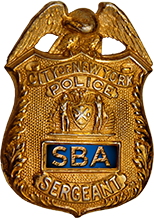SBA Website Under Maintenance
The Sergeants Benevolent Association website will be in a scheduled maintenance mode while the site is being redesigned and we perform security updates.
Thank you for your patience!

The Sergeants Benevolent Association website will be in a scheduled maintenance mode while the site is being redesigned and we perform security updates.
Thank you for your patience!